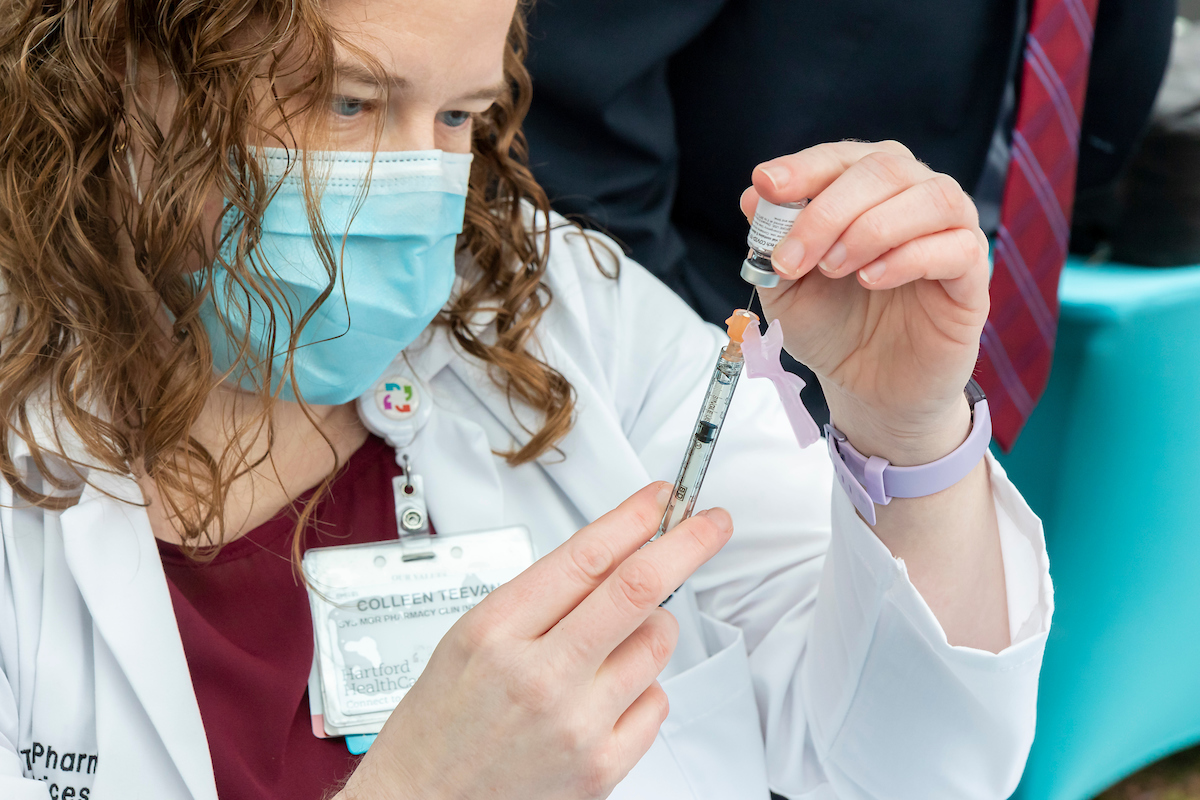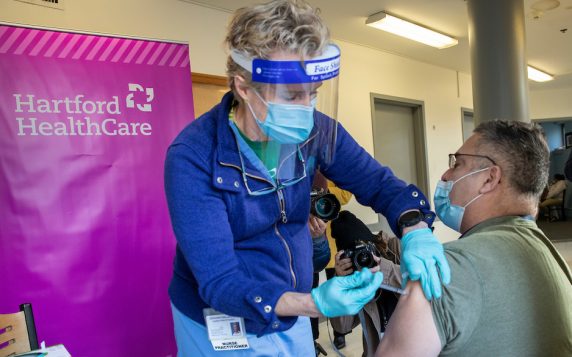Fewer than 30 percent of people in the United Kingdom who received the Pfizer-BioNTech COVD-19 vaccine experienced injection-site pain and fewer than 10 percent reported fatigue and headache after the first dose, according to a real-world analysis published in the journal The Lancet Infectious Diseases.
That’s a marked drop from Phase III clinical trials, where the most common side effects were injection-site pain (71 to 83 percent), fatigue (34 percent to 47 percent) and headache (25 percent to 42 percent).
Researchers used information from 627,383 people who logged their symptoms in the ZOE COVID Symptom Study app after receiving either the Pfizer-BioNTech or AstraZeneca vaccine between Dec. 8 and March 10. The AstraZenca vaccine, approved for use in the United Kingdom and several European Union, has not been approved in the United States by the Food and Drug Administration.
Here are study findings related to the Pfizer-BioNTech vaccine:
- 57.2 percent reported arm tenderness after the first dose, 50.9 after the second dose.
- 22 percent reported side effects after the second dose,11.7 percent after the first dose.
- More than 14.4 percent reported fatigue after the second dose, 8 percent after the first.
- 13.2 percent reported a headache after their second dose, 7.8 percent after their first.
- Local side effects, like injection-site soreness, were slightly more frequent after the first dose (71.9 percent) than the second (68.5 percent).
- People who had a confirmed case of COVID were three times more likely to have whole-body side effects.
- Side effects were more common among people under 55 years old and women.
- Side effects appeared within the first 24 hours, lasting about a day.
In the study, 25.4 percent had a mild systemic side effect — affecting a part of the body other than the vaccination site, such as headache, chills, fatigue, diarrhea and nausea — most pronounced in the first 24 hours but typically lasting no more than than two days. And two-thirds had a local side effect, experiencing either pain or tenderness near the injection site. And it’s perhaps no surprise that the second Pfizer-BioNTech dose was more likely to cause systemic side effects.
“The reason we get those reactions is because your immune system is ramping up,” says Dr. Henry Anyimadu, an Infectious Disease Specialist at The Hospital of Central Connecticut in New Britain. “You get the initial dose, which is the primer dose. That wakes up your immune system. The second dose is more of a booster that kicks up your immune system even more. You will see the signs and symptoms.”



